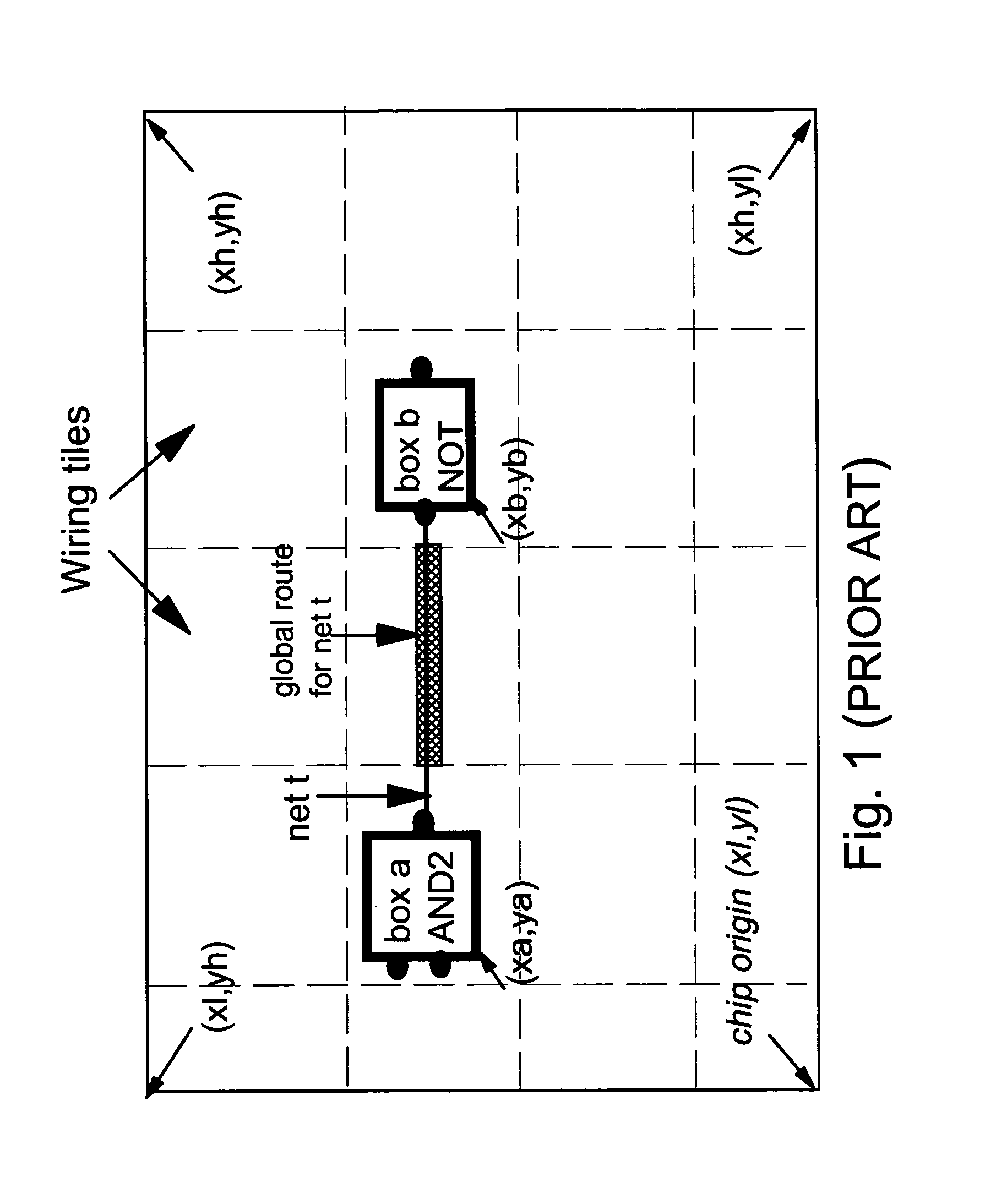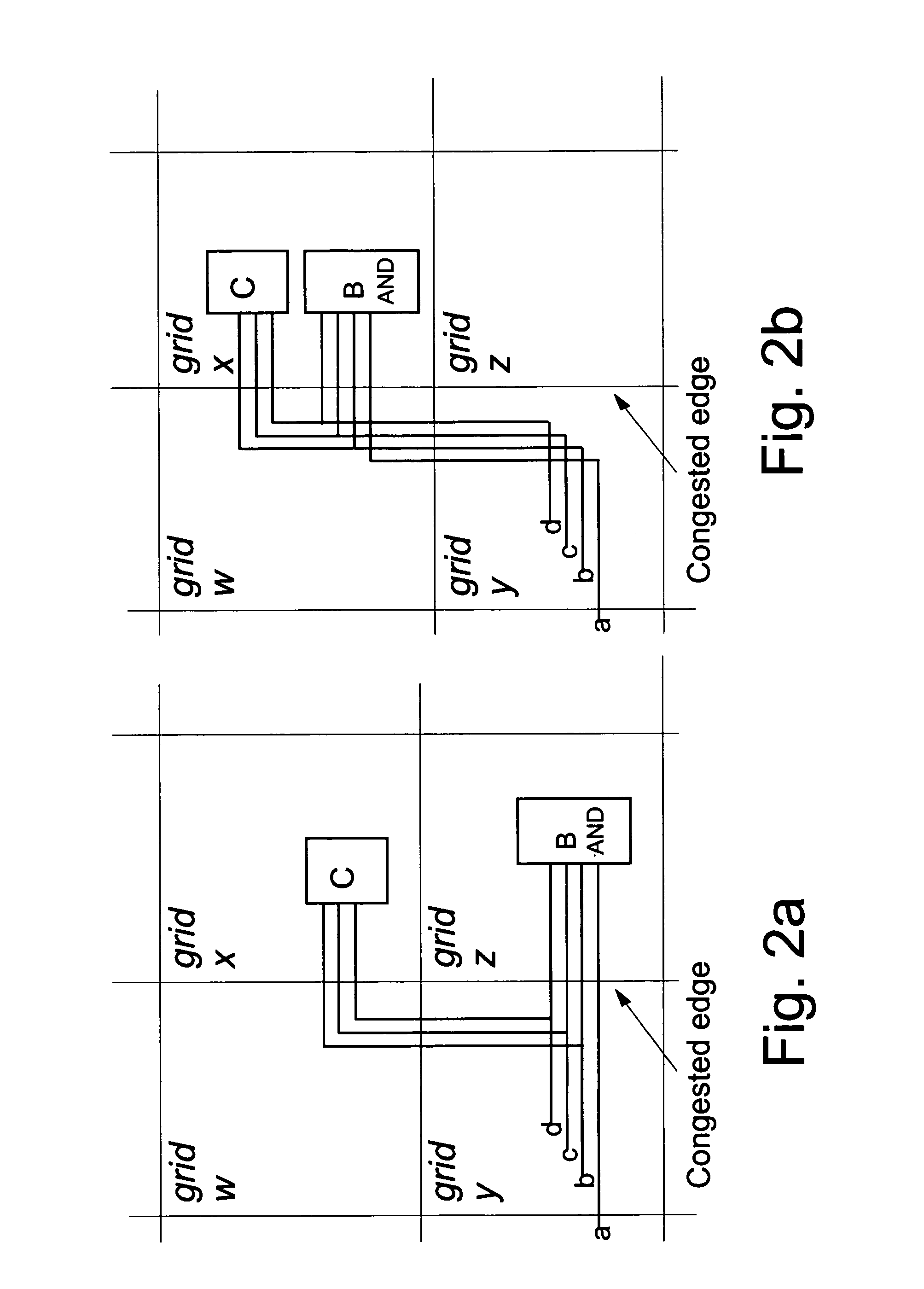Method for reducing wiring congestion in a VLSI chip design
a technology of integrated circuits and chip designs, applied in computer aided design, basic electric elements, instruments, etc., can solve the problems of inability to perform the desired function, and inability to guarantee the box's function, so as to avoid the congestion of wiring areas and never degrade the effect of congestion
- Summary
- Abstract
- Description
- Claims
- Application Information
AI Technical Summary
Benefits of technology
Problems solved by technology
Method used
Image
Examples
Embodiment Construction
[0043]The novelty of the invention being described herein resides in applying transformations that move, decompose, add logic elements or modify wire connections in order to reduce congestion and provide a routable design. Hereinafter, an algorithm is provided along with incremental placement and incremental routing to relieve the wiring congestion. Success at this process reduces or eliminates the need for manual intervention on the part of the designer.
[0044]The method assumes that the design is already placed, optimized and globally routed. Global routing places a wiring grid over the design, as described above. Each edge of the grid has a known capacity which is the amount of wire Ci that can pass over edge I, and a utilization Ui, (i.e., how many wires cross the edge i, weighted by width), such that
Ui=Sum wire j crossing edge i widthj, (Eq. 1)
wherein widthj is the width of wire j crossing edge i. (In the present example, for clarity sake, all the wires are assumed to have a wi...
PUM
 Login to View More
Login to View More Abstract
Description
Claims
Application Information
 Login to View More
Login to View More - R&D
- Intellectual Property
- Life Sciences
- Materials
- Tech Scout
- Unparalleled Data Quality
- Higher Quality Content
- 60% Fewer Hallucinations
Browse by: Latest US Patents, China's latest patents, Technical Efficacy Thesaurus, Application Domain, Technology Topic, Popular Technical Reports.
© 2025 PatSnap. All rights reserved.Legal|Privacy policy|Modern Slavery Act Transparency Statement|Sitemap|About US| Contact US: help@patsnap.com



